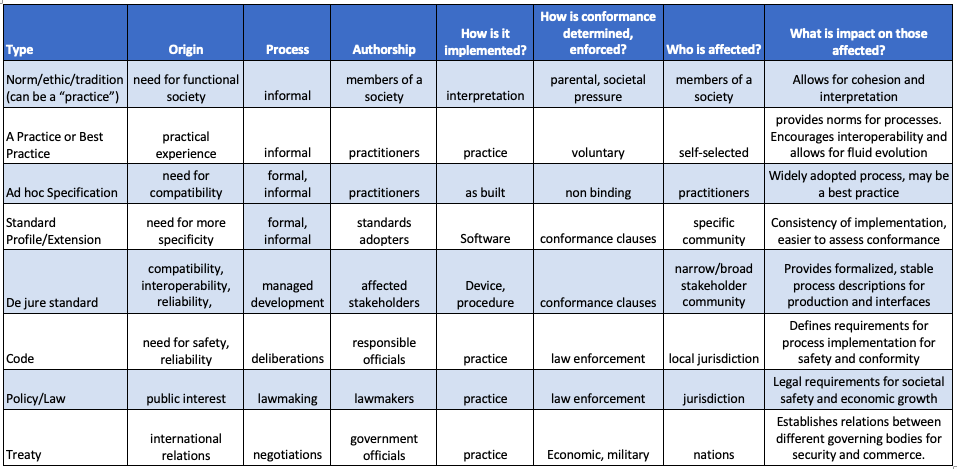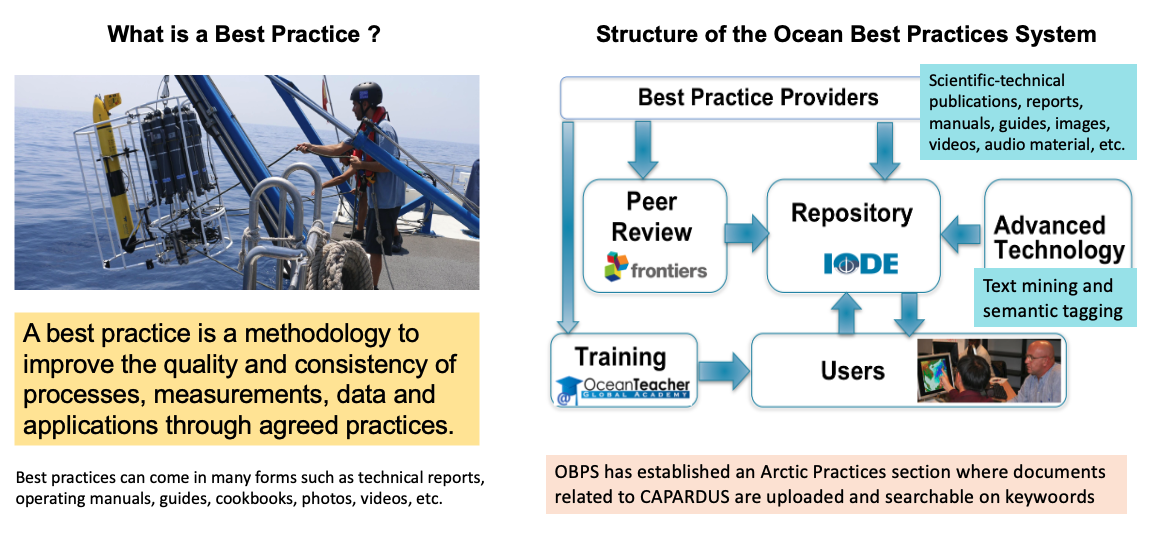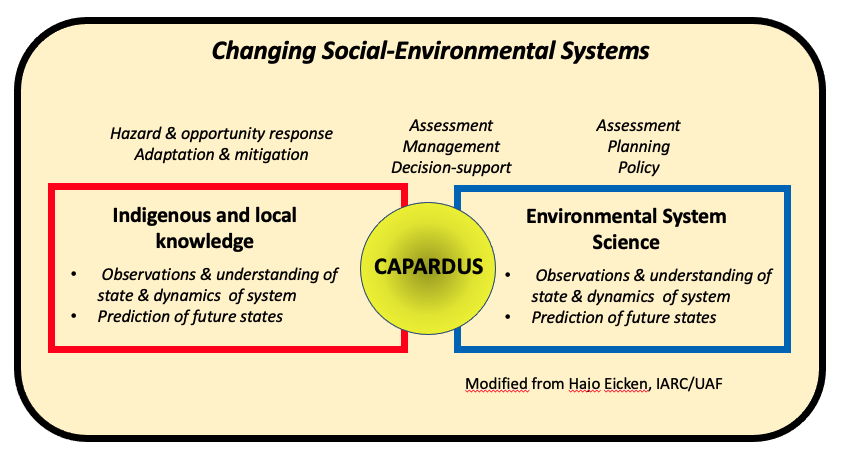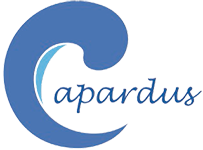Title: Capacity-building in Arctic Standardisation Development
A Coordination and Support Action under H2020-LC-CLA-07-2019. Start date: 01 December 2019 End date: 31 May 2023
Coordinator: Stein Sandven, Nansen Environmental and Remote Sensing Center
Objectives : (1) Establish a comprehensive framework for development, understanding and implementation of Arctic standards related to climate, environment and sustainable development; (2) Identify and document common practices as basis for development of standardization, building on the Ocean Best Practice System (www.oceanbestpractices.org); and (3) Engage communities active in the Arctic including research and services, Indigenous and local communities, commercial operators and governance bodies in defining Arctic Practice System
Abstract: CAPARDUS is a CSA project under H2020 with focus on capacity-building to develop guidelines, standards and best practices related to exploitation of new technologies and utilization of data to support sustainable development in the Arctic. The capacity-building involve scientists, students, technology providers, economic actors, local communities, regulators and their organisations, who will participate in a series of workshops and research schools from 2020 to 2022. These events will be used as part of case studies in local communities in different regions, showing how the social-environmental systems are changing Arctic communities and what are the drivers for these changes. The climate change and its consequences in the Arctic leads to new requirements for planning and decision-making based on scientific and economic data, assessments and predictions. A prerequisite for good planning is access to data and information of relevance to the operators in the Arctic. The project will develop data management standards and best practices as a collaborative effort between scientists, local communities and other stakeholder groups, including economic actors who are interested in business development. Towards the end of the project CAPARDUS will provide recommendations for sustainable economic development in the Arctic, to the benefit of both local communities and other operators.
Themes: Community planning and decision making, Natural resource management, Safety of operation, Tourism, Ethics, norms, responsible research, Observing systems, Data systems,
What is meant by standards in a wider context ? To some, the term means a set of technical directives developed by international standards organizations and confirmed and monitored for compliance by governance bodies. Others may consider standards to be a set of rules or agreements established by a “community” that are based on norms and ethical behaviors. In this broad gradation, there is overlap between more formal top down standards and bottoms up community developed “best practices”. The figure presents a continuum model that situates different kinds of “standards” ranging from culturally socially negotiated ethics and norms, to formally negotiated laws. A factor in this continuum model is the gradations of time scales for implementation, with the more formal standards taking longer to formulate and be accepted.
(1) Standardization continuum is a term to explain that standards can range from ethics, norms, to practices, international standards, treaties to laws, see figure blow. This represents different types of standards (a representation in one dimension)

(2) Standards Matrix is a more general representation of standards in two dimension. A standard is something established by custom, general consent or authority as a model to be compared against, a rule for measuring the quantity, weight, extent, value or quality of something. When we speak of technical standards, we’re speaking of published documents that establish specifications and procedures designed to maximize the reliability, interconnectivity, interoperability, and performance of materials, products, methods or services. Standards can therefore be classified according to type, origin, process, authorship, how it is implemented, how it is determined/enforced, who are affected and what is the impact of those affected.

(3) Technology and methods. The Ocean Best Practice Sysstem (OBPS) is a global, sustained system comprising technological solutions and community approaches to enhance management of methods as well as support the development of ocean best practices. In CAPARDUS we use the Ocean Best Practices System Repository (OBPS-R), which is an open access, permanent, digital repository of community best practices in ocean-related sciences and applications maintained by the International Oceanographic Data and Information Exchange (IODE) of the UNESCO-IOC as an IOC (IODE, GOOS) coordinated activity. OBPS-R offers an array of services in discovery, access and training of Best Practices working with the technical communities that originate and use best practices.

(4) The social-environmental system: In order to understand and support sustainable development in the Arctic, it can be useful to illustrate how scientific knowledge and local community knowledge are different components of the overall knowledge,. The figure below illustrates environmental system science (blue box) and Indigenous and local knowledge (red box) as complementary systems. The overall concept of CAPARDUS is to develop the link between the two systems further in order to make environmental science more useful for citizens and to include local knowledge as part of environmental and social science in the Arctic. Good connection between the two systems will ensure that the economic, social and environmental development is balances in the Arctic. These aspects are important to understand and be responsive to the participants in the case studies and for development of guidelines, best practices and standards.

Consortium partners
- Nansen Environmental and Remote Sensing Center (NERSC) Norway
- Nordic Agency for Development and Ecology (NORDECO), Denmark
- University of Greenland (UoG), Greenland
- Alfred Wegener Institute for Polar and Marine Research (AWI), Germany
- IEEE France section France
- Norwegian Institute for Nature Research (NINA), Norway
- University of Copenhagen, Denmark
- Nansen International Environmental and Remote Sensing Centre (NIERSC), Russia (terminated in March 2022)
- University of Hokkaido, Japan
Subcontractors
- Exchange of Local Observations and Knowledge of the Arctic (ELOKA), USA
- University of Alaska Fairbanks (UAF/IARC), USA
- Center for Support of Indigenous Peoples of the North (CSIPN), Russia
- Element84 (E84), USA
